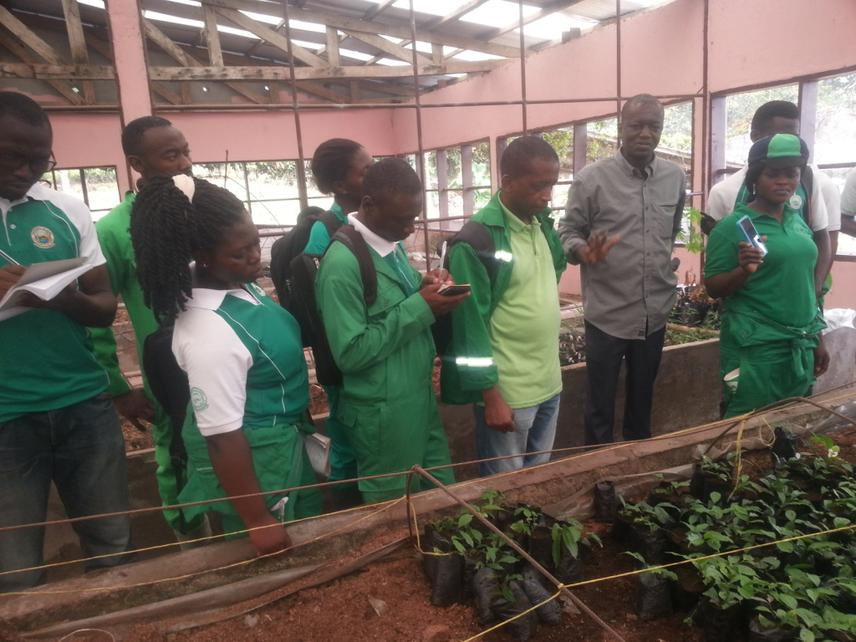Article featuring the project.
Oumar Doungous
Other projects
11 Nov 2013
Field Collection and Propagation of Gnetum africanum and G. buchholzianum for the Conservation of the Wild Populations
To develop simple and efficient propagation method for Gnetum spp., train local communities and procure planting materials for cultivation.

Training students.
Gnetum africanum and G. buchholzianum are two edible and very similar understory lianas found only in the humid tropical forest of Africa. As a result of deforestation, overharvesting and increasing demands, a decline of the wild populations has already been noticed in certain areas. Despite their large range, they are listed as near threatened species in the IUCN red list. Both species are identified among the most important plants for domestication. Since there are indications that total extinction of Gnetum spp. is avoidable through sustainable cultivation, the conservation approach which is “Conservation through Cultivation” is currently recommended and adopted. But there is a lack of planting materials. Seed germination trials under nursery conditions have not being encouraging. Propagation methods so far developed are limited by low rate of success and long-time requirement to move from a vine cutting to a seedling. So there is a need to improve the method of propagation of these species. From our first Rufford project we studied the fundamental aspects of rooting and identified best auxins that improved rooting performances of Gnetum spp. Research activities were mainly conducted in the laboratory and greenhouses. There is a need to simplify the technology and make it easily accessible to the nurserymen and farmers. The project will involve plant propagation in nurseries established in our research station and community fields.
The work will first of all apply the non-mist propagation method through cutting using a combination of 2 best auxins (indole butyric acid (IBA) and naphthalene acetic acid (NAA)) and liquid rooting concentrate that can easily be used by nurserymen and farmers. This will improve the rate of rooting, followed by reduction of time to roots. We will transfer the technology to nurserymen and common initiative groups and distribute Gnetum planting materials for cultivation in farms or backyards thereby sustaining the management of the species.